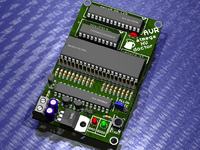ctownsend
Advanced Member level 2
if you don't have a scope test your cable with another avr that is working still using the same software on the boot cd.
This way you will know whether or not it is your cable, the parallel port or both.
This way you will know whether or not it is your cable, the parallel port or both.

